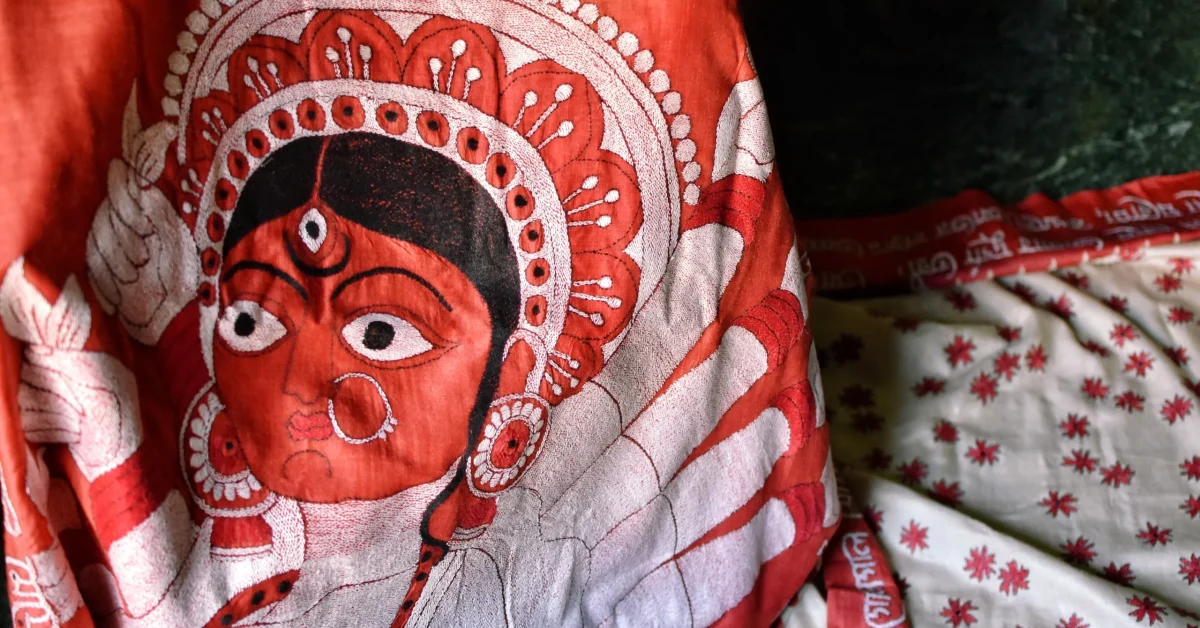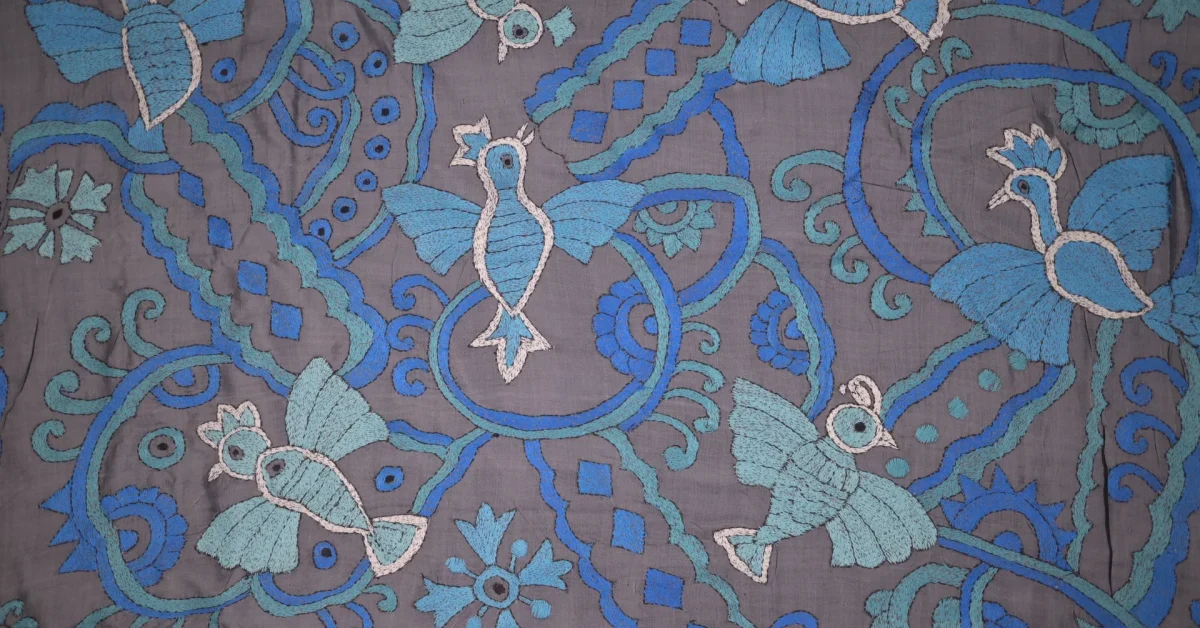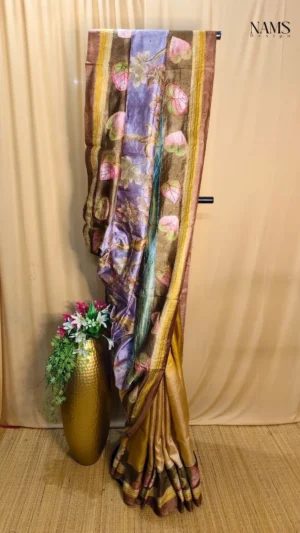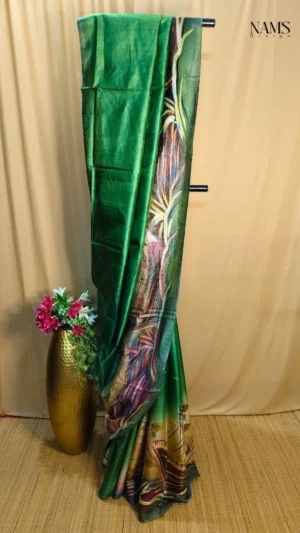Evolution of Nakshi Katha Sarees from Katha: Difference and their Tales of Origin
-
Sarees play a huge role in the daily lives of Indian women and its rich heritage and culture. But, what’s more interesting is the fact that some few centuries ago, women in rural Bengal had found a way to combine them both and make way for the creation and evolution of the katha saree that we all know of and came to love and appreciate today.
In recent years, katha sarees have seen an increasingly high demand in the world of contemporary fashion. But oftentimes, we skip to realise how they came to be what they are today, and its significance and social impact in Bengali culture.
In this blog post, we shall dive into the world of katha sarees, its artisanal history and Bengali heritage, and dissect the nitty gritty of it all.
1. Origin and History of the Katha
Traditionally, a katha refers to a thin blanket made out of previously used sarees, and but not limited to lungis, and gamchas as well.
It usually consists of three layers, but can have up to six layers based on the needs. After resizing and aligning the fabrics in place, the border is stitched, after which multiple running stitches are sewn onto it by hand, giving it their iconic crinkly appearance. And as it is a labor intensive and time consuming process, sometimes it takes anywhere between months to years to finish making one single katha.
Therefore, the Bengali women in rural areas used it as a means of recreation by repurposing their fabric during their leisure time.
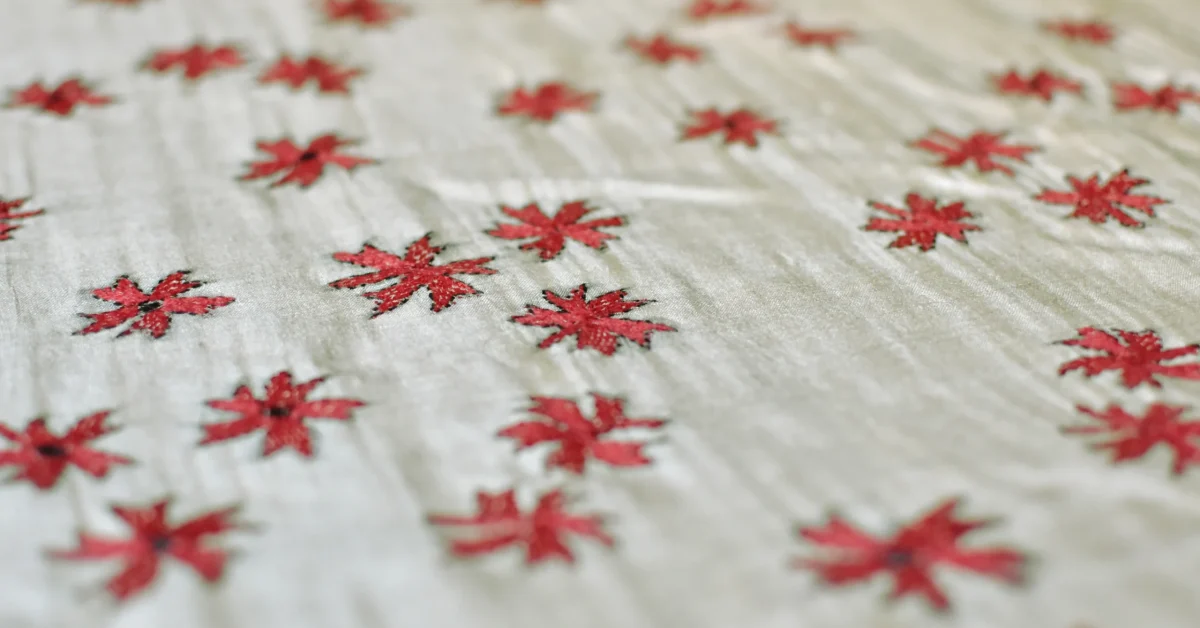
Therefore, the Bengali women in rural areas used it as a means of recreation by repurposing their fabric during their leisure time.
2. Difference between Katha and Nakshi Katha
Nakshi katha is a subcategory or a variation of the katha, and while the traditional katha only showcases simple running stitches, the nakshi katha refers to a quilt where the stitches can vary and the embroidery features different motifs, objects and figurines inspired by nature, religion and daily life.
The Bengali women used it as a way of expressing themselves and imprinting their art on a canvas of old and used fabric influenced by numerous objects that they often came across in a picturesque or an artistic fashion/manner. It symbolized their presence, role and importance in a society during a time period where most women were mostly illiterate and only/strictly limited to doing household chores or outdoor work.
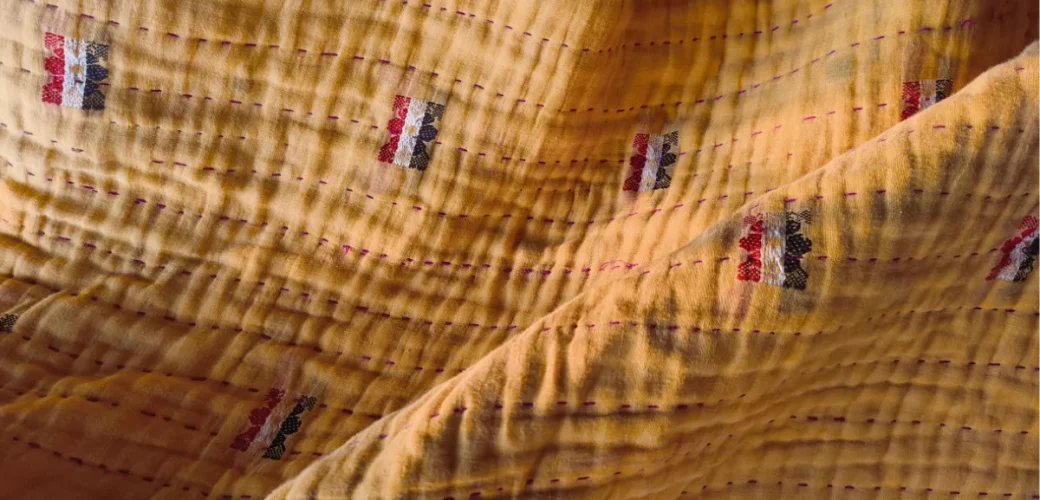
The Nakshi Kathas primarily are more intricate in their embroidery work and often showcase flowers, paisley motifs, geometric patterns and most importantly, a border which can be either embroidered or the border of a saree. They also include/showcase elements like/of the sun, moon, trees, landscapes, chakras, as well as figurines and wildlife. What started as a means of self expression during leisure time soon turned into an art form through embroidery and paved its way to popularity in the future.
3. Evolution of the Katha into a Saree
Primarily due to their poverty and circumstances that limited them to having substantial resources and knowledge of embroidery, the Bengali women found a way to reuse their fabrics and turn it into something useful and effective to the point where even the thread that they used to use to sew the layers of the katha together would also be drawn from the fabric itself – talk about reusability at its peak!
However, reusing the threads of the sari is not as common of a practice today, and has been now replaced with simple embroidery threads of nylon. While the tradition of women stitching katha today has become pretty much non-existent in this day and age, the demand still remains for the art work.
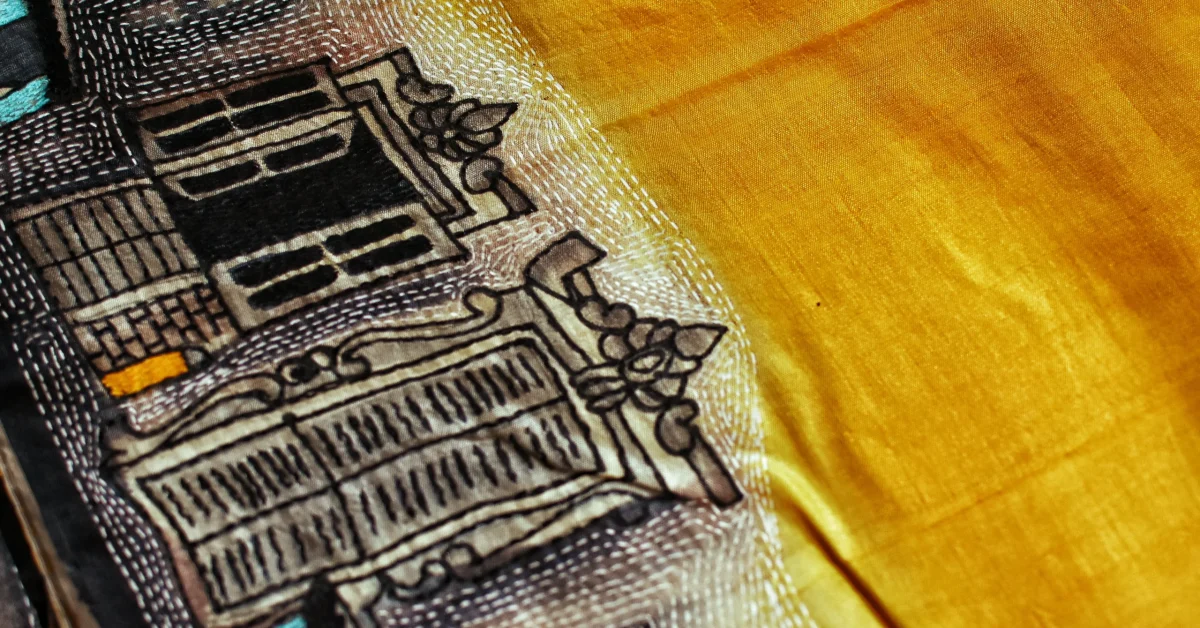
Katha is an umbrella term, which means it can be practically anything that has been made out of old fabrics and is being reused as blankets, quilts, bedspreads, pillow covers, or even as tabletops. With time, however, /during the course of time this realm slowly started expanding and eventually reached the territory of fashion, in the form of sarees, purses and shawls.
Nowadays, katha stitch embroidery is featured in other various pieces of clothing such as skirts, shirts, and jackets.And thus over the years, the evolution of such began, and the influence of Katha and Nakhsi katha embroidery kept on increasing in the fashion world…. And now many high-end designer brands have been seen to showcase and flaunt it to the world.
4. Cultural Importance
Kathas have always been a staple in every Bengali household. Although it is up to debate whether its origin comes from India or Bangladesh, it is undeniable that it has a huge impact in modern fashion today. Sarees featuring Katha embroidery work have this rustic feel to it that no amount of machinery work can replicate, and it is a testament to the skills of our artisans, their determination and creativity to bring such pieces into life. It not only supports their livelihood, but also preserves the pride and heritage of Bengali culture. It only goes to show how vivid and diverse India really is. Every stitch and weave holds a history and a story, and so is expressed through the hands of the ones who bring their vision to life.
While Nakshi Katha sarees are extremely popular, nowadays they also feature a multitude of embroidery work from different regions in India, and the end result is something so unique and spectacular, that it is truly worthy of being a prized possession for fashionistas and saree enthusiasts.
At Nams Design, we feature a huge variety of unique Nakshi Katha sarees, each and every one of them being beautiful in their own way. Whether it be for occasions or casual wear, we happen to have it all. We take pride in our Bengali heritage and strive to celebrate the creative history behind these origins, as well as our artisans who still continue to deliver these masterpieces, which is why materials are also sourced directly from the artisans themselves, to ensure 100% authenticity.
Share On:
